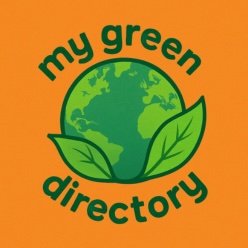Turn land regeneration into carbon offsets, community benefits, and climate impact.
Restoring degraded ecosystems is one of the most powerful nature-based solutions to combat climate change. Not only does it enhance biodiversity and sequester carbon, but it also allows sustainability-driven organizations to generate carbon credits — unlocking funding and creating long-term impact.
This guide outlines the step-by-step process, best practices, and how you can participate in ecosystem restoration to earn verifiable carbon offsets.
🌍 Why Restore Degraded Ecosystems?
💨 Carbon Sequestration
Restored forests, wetlands, grasslands, and blue carbon ecosystems like mangroves absorb CO₂ from the atmosphere, helping reduce global emissions.
🐾 Biodiversity Boost
Bringing degraded ecosystems back to life restores wildlife habitats, supports endangered species, and strengthens ecological resilience.
🤝 Community Benefits
These projects often generate local employment, improve water security, and support sustainable livelihoods for surrounding communities.
💰 Carbon Credit Generation
Verified projects can produce high-quality carbon credits that are tradable on the voluntary carbon market, offering financial incentives for conservation.
🚀 Step-by-Step: How to Restore Ecosystems for Carbon Credits
1️⃣ Identify Suitable Degraded Areas
🔎 Survey the landscape for degraded land: forests, wetlands, grasslands, coastal zones.
🎯 Focus on areas with high sequestration potential and ecological importance.
2️⃣ Choose the Right Restoration Method
| 🌿 Restoration Type | 🌟 Key Benefits | 🛠️ Example Techniques |
|---|---|---|
| Reforestation | High carbon uptake, habitat creation | Planting native trees, assisted natural regeneration |
| Wetland Restoration | Water purification, methane reduction | Rehydration, reed bed planting |
| Grassland Regeneration | Soil carbon, biodiversity corridors | Native grass seeding, controlled grazing |
| Mangrove Replanting | Blue carbon, flood defense | Propagule planting, pollution removal |
3️⃣ Use Certified Standards & Protocols
✔️ Choose recognized carbon standards like Verra, Gold Standard, Regen Registry, or Ecosystem Restoration Standard (ERS).
📏 Ensure Measurement, Reporting & Verification (MRV) is in place for transparency and credibility.
4️⃣ Engage Stakeholders & Secure Funding
🤝 Collaborate with local communities, NGOs, and governments to align goals and ensure inclusivity.
💸 Apply for funding via carbon credit marketplaces, impact investors, or groups like Symbiosis that pool demand for high-integrity projects.
5️⃣ Register, Monitor & Sell Carbon Credits
📝 Register your project on a recognized carbon credit platform.
📊 Use remote sensing, drones, or on-ground surveys for accurate monitoring.
💼 Sell or retire your carbon credits to meet your own net-zero goals or attract ethical investors.
✅ How to Ensure Transparency & Long-Term Success
- 🎯 Set measurable goals for climate, biodiversity, and social impact.
- 🛰️ Use satellite data, sensors, and field teams to track carbon storage.
- 📢 Communicate results through open reporting to build trust and credibility.
🌳 Restoration Success Stories
🌐 Global Initiatives
Projects under the Bonn Challenge and UN Decade on Ecosystem Restoration aim to restore hundreds of millions of hectares globally.
🌊 Blue Carbon Projects
Mangrove and wetland restoration in Southeast Asia and West Africa have generated massive blue carbon offsets while protecting coastlines.
🧑🌾 Community-Led Models
Grassroots efforts in Latin America and Africa show how low-cost, high-impact restoration can empower local peopleand protect the planet.

Comments